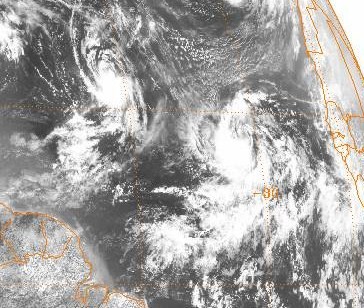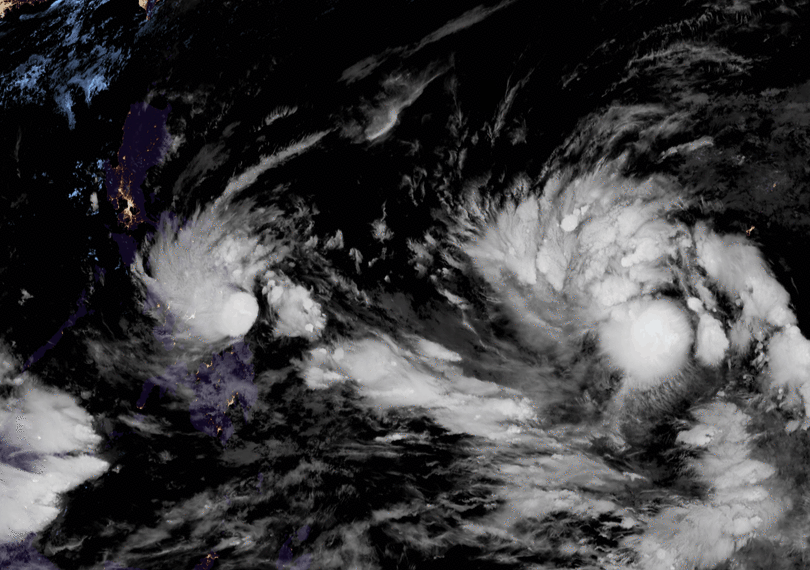|
List Of Storms Named Luis
The name Luis has been used for five tropical cyclones worldwide, one in the Atlantic Ocean and four in the Philippines by PAGASA in the Western Pacific Ocean. In the Atlantic: * Hurricane Luis (1995) – a Category 4 hurricane which killed 16 in the Leeward Islands and one in Newfoundland and Labrador. The name ''Luis'' was retired following the 1995 hurricane season and was replaced by '' Lorenzo''. In the Western Pacific: * Typhoon Shanshan (2006) (T0613, 14W, Luis) – a strong typhoon which struck Japan * Typhoon Kalmaegi (2014) (T1415, 15W, Luis) – a minimal typhoon which struck the Philippines * Tropical Depression 24W (2018) (24W, Luis) – a weak tropical depression which struck Taiwan * Typhoon Roke (2022) The 2022 Pacific typhoon season was the third consecutive season to have below-average tropical cyclone activity, with twenty-five named storms, although it was more active than the previous seasons by named storm count. Ten became typhoons, a ... (T2218, ... [...More Info...] [...Related Items...] OR: [Wikipedia] [Google] [Baidu] |
Tropical Cyclone
A tropical cyclone is a rapidly rotating storm system characterized by a low-pressure center, a closed low-level atmospheric circulation, strong winds, and a spiral arrangement of thunderstorms that produce heavy rain and squalls. Depending on its location and strength, a tropical cyclone is referred to by different names, including hurricane (), typhoon (), tropical storm, cyclonic storm, tropical depression, or simply cyclone. A hurricane is a strong tropical cyclone that occurs in the Atlantic Ocean or northeastern Pacific Ocean, and a typhoon occurs in the northwestern Pacific Ocean. In the Indian Ocean, South Pacific, or (rarely) South Atlantic, comparable storms are referred to simply as "tropical cyclones", and such storms in the Indian Ocean can also be called "severe cyclonic storms". "Tropical" refers to the geographical origin of these systems, which form almost exclusively over tropical seas. "Cyclone" refers to their winds moving in a circle, whirling round ... [...More Info...] [...Related Items...] OR: [Wikipedia] [Google] [Baidu] |
Philippines
The Philippines (; fil, Pilipinas, links=no), officially the Republic of the Philippines ( fil, Republika ng Pilipinas, links=no), * bik, Republika kan Filipinas * ceb, Republika sa Pilipinas * cbk, República de Filipinas * hil, Republika sang Filipinas * ibg, Republika nat Filipinas * ilo, Republika ti Filipinas * ivv, Republika nu Filipinas * pam, Republika ning Filipinas * krj, Republika kang Pilipinas * mdh, Republika nu Pilipinas * mrw, Republika a Pilipinas * pag, Republika na Filipinas * xsb, Republika nin Pilipinas * sgd, Republika nan Pilipinas * tgl, Republika ng Pilipinas * tsg, Republika sin Pilipinas * war, Republika han Pilipinas * yka, Republika si Pilipinas In the recognized optional languages of the Philippines: * es, República de las Filipinas * ar, جمهورية الفلبين, Jumhūriyyat al-Filibbīn is an archipelagic country in Southeast Asia. It is situated in the western Pacific Ocean and consists of around 7,641 islands t ... [...More Info...] [...Related Items...] OR: [Wikipedia] [Google] [Baidu] |
PAGASA
Pagasa may refer to: * ''Pagasa'' (genus), an insect genus in the family Nabidae *PAGASA, an acronym for the Philippine Atmospheric, Geophysical and Astronomical Services Administration *"May Pagasa", a pen-name of José Rizal *Pagasa, alternate spelling of Pagasae Pagasae or Pagases ( el, Παγασαί, Pagasaí), also Pagasa, was a town and polis (city-state) of Magnesia in ancient Thessaly, currently a suburb of Volos. It is situated at the northern extremity of the bay named after it (Παγασητι� ..., a city of ancient Thessaly See also * Pag-asa (other) {{dab ... [...More Info...] [...Related Items...] OR: [Wikipedia] [Google] [Baidu] |
Hurricane Luis
Hurricane Luis was a long lived and powerful Category 4 hurricane. It was the strongest hurricane to make landfall and the third-most intense hurricane recorded during the 1995 Atlantic hurricane season. The storm, along with Humberto, Iris, and Karen, was one of four simultaneous tropical systems in the Atlantic basin. Luis caused very extensive damage to Antigua, St. Barthelemy, the island of St. Martin and Anguilla as it affected Bermuda. The storm accounted for 19 confirmed deaths, left nearly 20,000 homeless (mostly in Anguilla, Barbuda, and St. Martin), and affected more than 70,000 people. Total damage was estimated at $3.3 billion (1995 USD) across the affected areas. Earlier Category 4 storms that impacted the Leeward Islands in the 20th century include Hurricane Dog in 1950, Hurricane Donna in 1960, Hurricane David in 1979, and Hurricane Hugo in 1989. Luis was the second of three tropical cyclones to affect Guadeloupe in a short period; Hurricane Iris had ... [...More Info...] [...Related Items...] OR: [Wikipedia] [Google] [Baidu] |
List Of Storms Named Lorenzo
The name Lorenzo has been used for four tropical cyclones in the Atlantic Ocean, replacing the name Luis. * Tropical Storm Lorenzo (2001), did not threaten land. * Hurricane Lorenzo (2007), struck Veracruz as a Category 1 hurricane. * Tropical Storm Lorenzo (2013), did not threaten land. * Hurricane Lorenzo (2019) Hurricane Lorenzo, also known as Storm Lorenzo for Ireland and the United Kingdom while extratropical, was the easternmost Category 5 Atlantic hurricane on record. Lorenzo was the twelfth named storm, fifth hurricane, third major hurrica ..., the easternmost Category 5 hurricane on record. Lorenzo {{DEFAULTSORT:Lorenzo ... [...More Info...] [...Related Items...] OR: [Wikipedia] [Google] [Baidu] |
Typhoon Shanshan (2006)
Typhoon Shanshan, known in the Philippines as Typhoon Luis, was a strong tropical cyclone, typhoon that affected parts of East Asia in late September 2006. The 13th named storm of the 2006 Pacific typhoon season, Typhoon Shanshan was also the seventh typhoon of the year operationally recognised by the Japan Meteorological Agency. In post-operational analysis Shanshan became the eighth typhoon of the year when Typhoon Maria was added to the list. The Joint Typhoon Warning Center considered Shanshan the 13th tropical storm and eighth typhoon of the season, a Saffir-Simpson Hurricane Scale, Category 4-equivalent typhoon in terms of 1-minute average wind speed. The name ''Shanshan'' was submitted to the lists of tropical cyclone names#Western North Pacific, naming list by Hong Kong and is a girls' given name. Shanshan wreaked havoc in Japan, with reports that it caused a tornado which derailment, derailed a train. It made landfall first in the Yaeyama Islands, where it caused heavy r ... [...More Info...] [...Related Items...] OR: [Wikipedia] [Google] [Baidu] |
Typhoon Kalmaegi (2014)
Typhoon Kalmaegi, known in the Philippines as Typhoon Luis, was the 22nd depression and the 15th named storm of the 2014 typhoon season. Kalmaegi was the first storm to make landfall over the Philippines since Typhoon Rammasun, two months prior. The storm caused flooding in Southeast Asia during mid-September. Kalmaegi started as a disturbance near Palau that could become a tropical cyclone in the next few days. JTWC would designate it to ''Tropical Depression 15W''. PAGASA also named the system ''Luis'' as the 11th named storm inside PAR. Environmental conditions became more conducive for intensification, which allowed 15W to intensify into a tropical storm and attained the name ''Kalmaegi''. On September 13, the storm intensified into a Category-1 typhoon as it moved through open warm waters. Around 17:00 PHT (09:00 UTC) on September 14, the eye of Kalmaegi made landfall in the coastal town of Divilacan, Isabela, bringing gusty winds and heavy rains in the area. Shortly afte ... [...More Info...] [...Related Items...] OR: [Wikipedia] [Google] [Baidu] |
Tropical Depression 24W (2018)
The 2018 Pacific typhoon season was at the time, the costliest Pacific typhoon season on record, until the record was beaten by the following year. The season was well above-average, producing 29 storms, 13 typhoons, and 7 super typhoons. It was an event in the annual cycle of tropical cyclone formation, in which tropical cyclones form in the western Pacific Ocean. The season ran throughout 2018, though most tropical cyclones typically develop between May and October. The season's first named storm, Bolaven, developed on January 3, while the season's last named storm, Man-yi, dissipated on November 28. The season's first typhoon, Jelawat, reached typhoon status on March 29, and became the first super typhoon of the year on the next day. The scope of this article is limited to the Pacific Ocean, to the north of the equator between 100°E and the 180th meridian. Within the northwestern Pacific Ocean, there are two separate agencies that assign names to tropical cyclones, which c ... [...More Info...] [...Related Items...] OR: [Wikipedia] [Google] [Baidu] |
Typhoon Roke (2022)
The 2022 Pacific typhoon season was the third consecutive season to have below-average tropical cyclone activity, with twenty-five named storms, although it was more active than the previous seasons by named storm count. Ten became typhoons, and three of those intensified into super typhoons. This low activity was caused by an unusually strong La Niña that had persisted from 2020. The season's first named storm, Malakas, developed on April 6, while the last named storm, Pakhar, dissipated on December 12. The season's first typhoon, Malakas, reached typhoon status on April 12. The season ran throughout 2022, though most tropical cyclones typically develop between May and October. Tropical storms Megi and Nalgae were responsible for more than half of the casualties, while typhoons Hinnamnor and Nanmadol both caused $1 billion in damages. The scope of this article is limited to the Pacific Ocean to the north of the equator between 100°E and 180th meridian. Within the no ... [...More Info...] [...Related Items...] OR: [Wikipedia] [Google] [Baidu] |
Atlantic Hurricane Set Index Articles
The Atlantic Ocean is the second-largest of the world's five oceans, with an area of about . It covers approximately 20% of Earth's surface and about 29% of its water surface area. It is known to separate the "Old World" of Africa, Europe and Asia from the "New World" of the Americas in the European perception of the World. The Atlantic Ocean occupies an elongated, S-shaped basin extending longitudinally between Europe and Africa to the east, and North and South America to the west. As one component of the interconnected World Ocean, it is connected in the north to the Arctic Ocean, to the Pacific Ocean in the southwest, the Indian Ocean in the southeast, and the Southern Ocean in the south (other definitions describe the Atlantic as extending southward to Antarctica). The Atlantic Ocean is divided in two parts, by the Equatorial Counter Current, with the North(ern) Atlantic Ocean and the South(ern) Atlantic Ocean split at about 8°N. Scientific explorations of the Atlantic ... [...More Info...] [...Related Items...] OR: [Wikipedia] [Google] [Baidu] |



